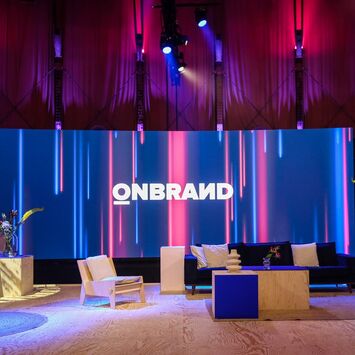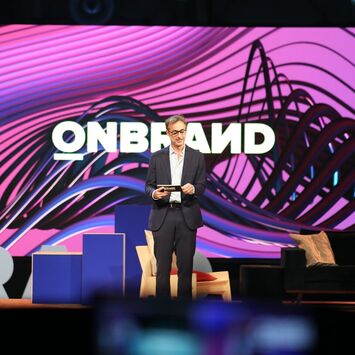Implementing a brand identity effectively is an enormously complex and challenging endeavor, for large and small organizations alike. In large corporations, informing, engaging with, training, and listening to thousands of people from all over the world, is, from an operational perspective, a very daunting task. Smaller companies, on the other hand, have to deal with limited resources, both financially and internally.
Today, brand consistency remains a rather underestimated principle. Generally speaking, only the most solid brands in the world really pay close attention to it, and that’s probably one of the reasons why they are where they are.
Tim Calkins, Clinical Professor of Marketing at the Kellogg School of Management at Northwestern University, concurs: “The second great challenge of branding is consistency, or getting an entire organization to embrace the brand and live up to the brand promise over time. Brands are created through a wide range of touch points; every time customers interact with a brand they form associations. Consistency matters, and it matters at every turn.”
Your brand compliance level indicates the grade of consistency when communicating your brand, whereas consistency defines the grade of coherence perceived throughout all of your communications. The level of coherence attained probably corresponds directly to the perception, trust and value people hold for your brands, which means that brand compliance has a direct impact on your company's reputation. Focusing your efforts on turning a mutable identity into one that's consistent can effectively maximize your brand's reputation.
While getting clarity on how consistent a brand is communicating is certainly subject to the peculiarities of each brand and its organization, the following seven tips are provided to help any company better understand the level of brand compliance it's currently achieving. The variety of brand elements that should be measured and analyzed should include alignment to the strategy, messaging, design, brand architecture, licensing or any combination of these.
1. Set up a global brand team
A good first step is establishing a global brand team with fluent and effective channels of communication. This group of experts serves as the brand's eyes, ears and voice, for a specific region, channel, function, business and/or stakeholder audience.
The members of this team do not only activate the brand in various business sectors and geographies, but also monitor the challenges and results derived from the implementation of the brand.
2. Establish a global help-desk
Before we start measuring, we need to ensure that all the information we gather will end up at the same place. Large corporations usually have dedicated help-desk teams that advise and assist employees to be on-brand, and that are reachable by a single email account (e.g. [email protected]) or a consulting service in the intranet’s brand center.
3. Record the status of compliance when providing services
Once all the inquiries are centralized and computerized we can begin our analyses. With regard to compliance, we can asses the status of adherence to our brand platform and expression guidelines once we receive the communication proposed in their inquiry, and therefore prior to counseling. We can also record and analyze other important factors, such as material type, region, department or vendor requesting counsel, or the nature of the consultation at hand.
This statistical information can also help you identify the materials that used the most, and the ones that bring up challenges, so that you can review and improve the related training programs and resources. You can also identify the regions or departments where you see greater difficulties, so that you can later reinforce relevant investments and make necessary adjustments. In terms of team performance, we can monitor our rates of response-time, in order to optimize it as much as possible; or identify which periods are typically more busy, which will help you plan and allocate resources more effectively in the future. Finally, this information can creating awareness and win the ongoing support of the senior management so that they keep championing the goal of greater brand consistency, by regularly sending executive summaries that highlight the most relevant facts and figures.
4. Audit your brand communication pieces
A good way of finding out how well the brand is being implemented is by establishing an audit system that regularly evaluates materials once they're produced and distributed.
The tangible materials addressed will generally include collaterals, stationery, marketing campaign pieces, packaging and merchandise. The collection of these materials together with a document showcasing how the brand was expressed in the digital world and in events and exhibitions, should be submitted periodically to the corporate team to effect a complete analysis of the brand activation.
5. Audit your exposure through the media
Another way to gain clarity on how on-brand our communications are is by carrying out an audit of our brand using the public media.
By using the main search tools available to surf through the digital universe and finding pages where our brand is present, we can access not only our on-line touch-points such as websites and social media sites, but also collaterals, pictures of events and facilities, and other materials of our brand that for other reasons have wound up online.
6. Conduct employee surveys
Is it possible to know if our organization will be brand-compliant even before communicating? It’s an ambitious objective, but it can be very useful to understand better how familiar the organization is with our identity, before any communication starts being produced and goes through the various internal channels the organization handles, which are controlled by vastly different groups of employees.
This research can be developed by sending out a simple survey to employees. A variety of basic questions might be asked, such as what its main attributes are, how its logotype should be used, or what information is known about the brand's policies and resources.
7. Conduct external research
Most organization stakeholders are external, so why not ask them directly? The ultimate objective here is to understand the grade of consistency they perceive throughout our communications, compared to that of our main competitors. This research can be whether qualitative or quantitative.









